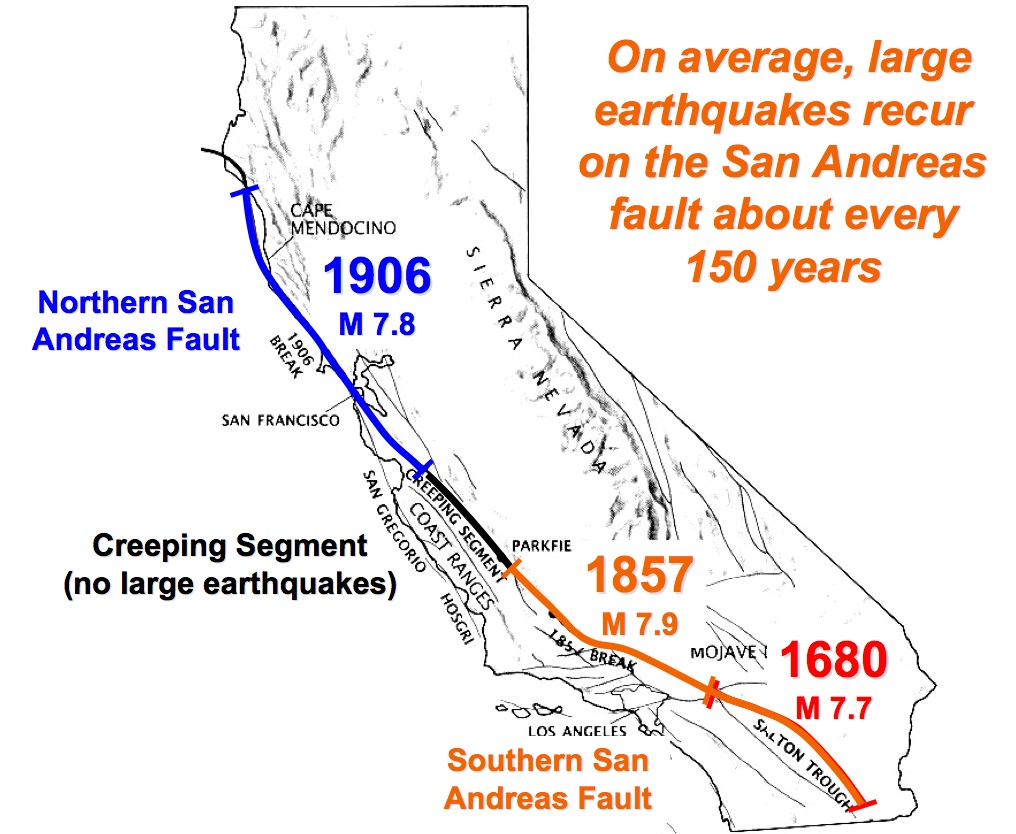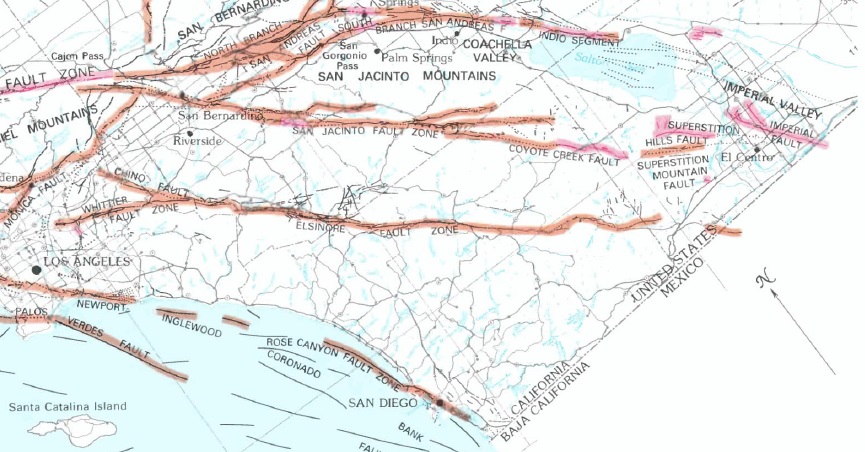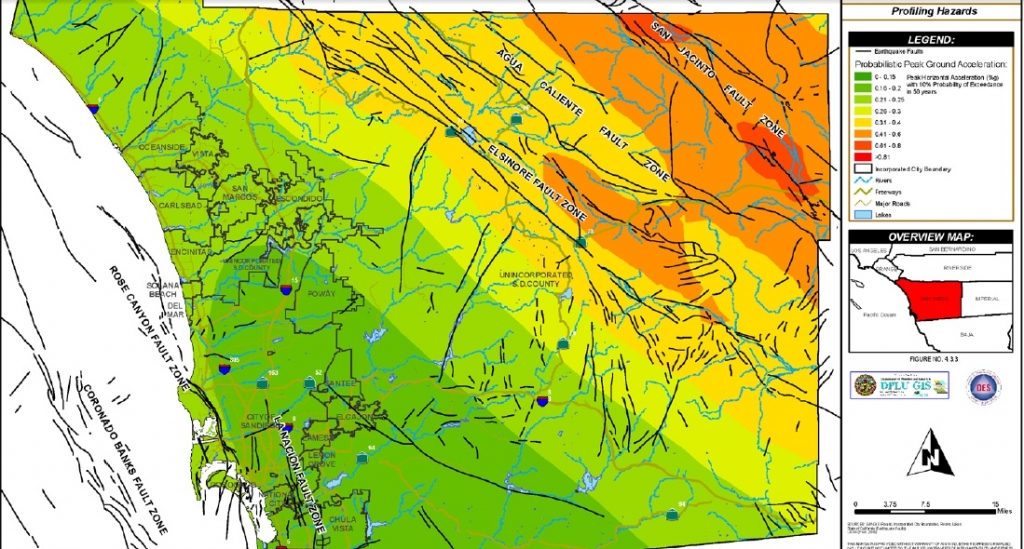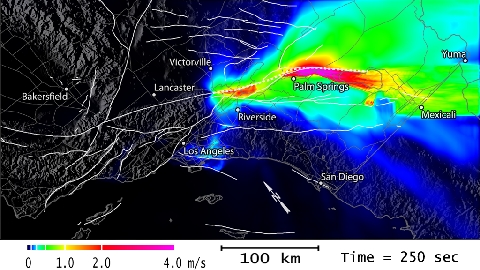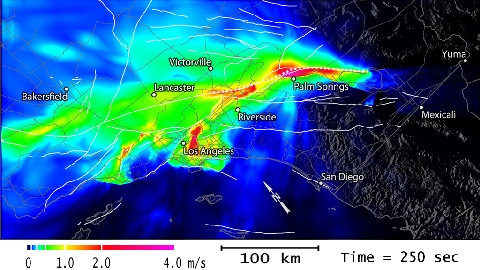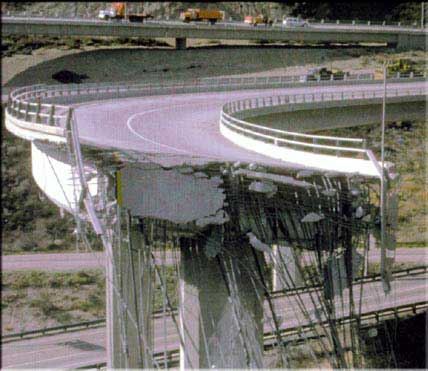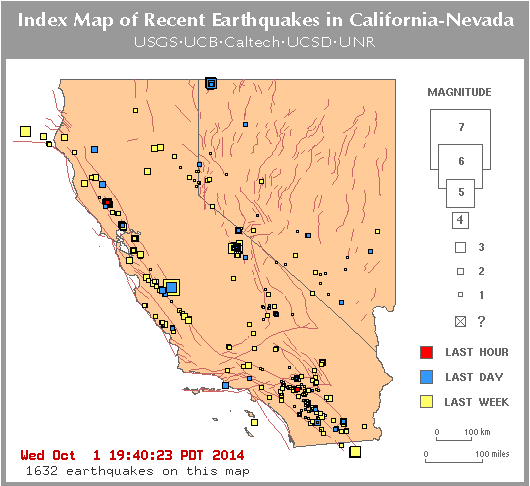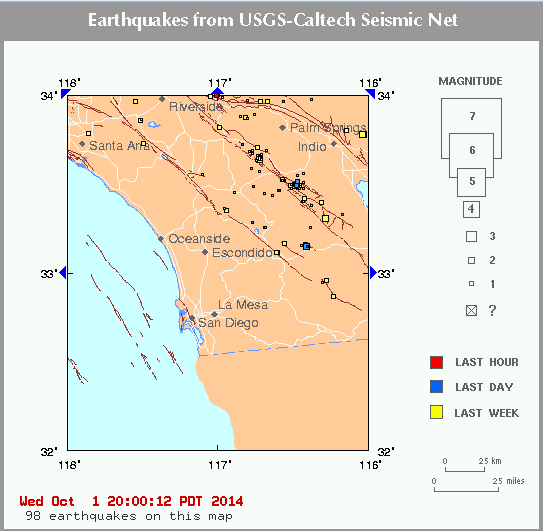Video from SCEC M8 simulation.
Earthquakes are a natural phenomenon in California. Those of us who grew up here can remember back to grade school that the big one is on the horizon. The big one is likely to come from the San Andreas Fault, which cuts from Point Arena in Northern CA to the Salton Sea, where it fragments into a system of faults after 625 miles. While statistically true, San Diego county is insulated a bit from the San Andreas Fault more than other parts of the state.
Fault system overview.
Southern CA major faults and systems. Many more faults exist, and many have yet to be discovered. The Rose Canyon Fault cuts right through La Jolla, and into San Diego. The county has done a risk assessment on this fault, and tabulated properties, structures and public infrastructure known to be at risk. It is believed that this fault could not generate anything greater than a 7.0 on the Richter scale.
Probability of peak ground acceleration, 2010.
Damage would be limited to immediate areas around the fault. The same can’t be said for a major event on the San Andreas.
Southbound rupture, East Los Angeles basin.
Northbound rupture, east of Palm Springs.
San Diego is nearly unscathed by direct damage in these scenarios. However, we are at a supply cul-de-sac. We import everything: water, electricity, natural gas, gasoline, food, and virtually all goods. Nearly every supply chain to San Diego passes through the areas that are going to be hit with the most damage.
These things can be repaired, and will in a timely fashion. Goods will be brought into the area for relief. The downside is that there will be a delay from the event, to when relief will be delivered.
This link is great to keep on hand, and displays in real time. It is also zoom-able, into tighter fields.
Link to San Diego Supercomputer Center earthquake models.
Link to Science in Your State: USGS guide to CA.
Link to historical record of earthquakes in CA from 1769 to present.
Shakeout.org: San Diego County
Dare to Prepare! Earthquakecounty.org:

